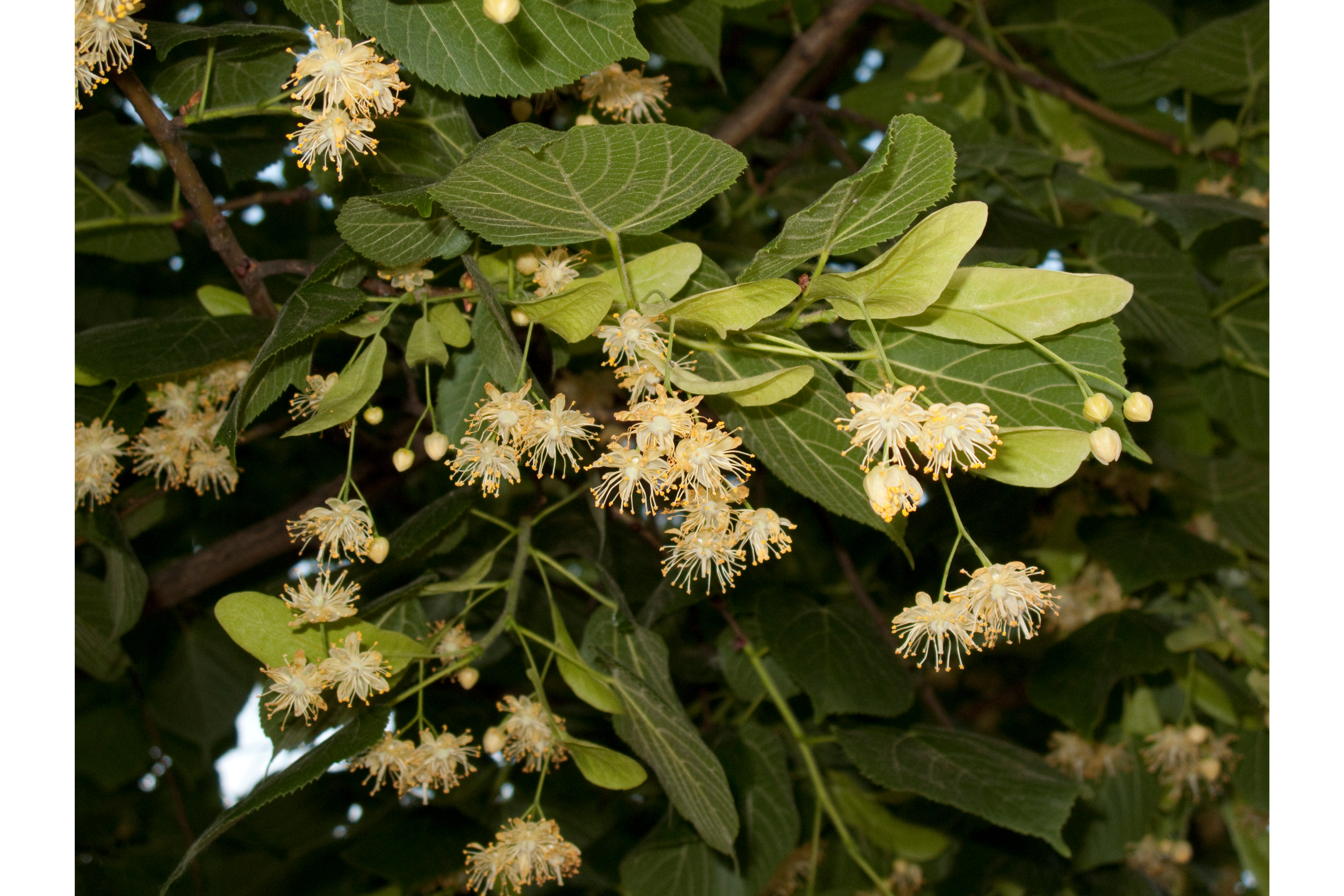Littleleaf linden
(Tilia cordata)

Description
Tilia cordata (small-leaved lime, occasionally littleleaf linden or small-leaved linden) is a species of Tilia native to much of Europe. It is found from Britain through central Fennoscandia, to central Russia, and south to central Portugal, Spain, Italy, Greece, Bulgaria, Romania, Turkey, the Caucasus, and western Asia. In the south of its range it is restricted to high elevations. Tilia cordata is a deciduous tree growing to 20–40 m (66–131 ft) tall, diameter 1/3 to 1/2 the height, with a trunk up to 1 m diameter. The bark is smooth and grayish when young, firm with vertical ridges and horizontal fissures when older. The crown is rounded in a formal oval shape to pyramidal. Branching is upright and increases in density with age. The leaves are alternately arranged, rounded to triangular-ovate, 3–8 cm long and broad, mostly hairless (unlike the related Tilia platyphyllos) except for small tufts of brown hair in the leaf vein axils – the leaves are distinctively heart-shaped. The buds are alternate, pointed egg shaped and have red scales. It has no terminal bud. The small yellow-green hermaphrodite flowers are produced in clusters of five to eleven in early summer with a leafy yellow-green subtending bract, have a rich, heavy scent; the trees are much visited by bees to the erect flowers which are held above the bract; this flower arrangement is distinctly different from that of the Common Lime Tilia × europaea where the flowers are held beneath the bract. The fruit is a dry nut-like drupe 6–7 mm long by 4 mm broad containing one, or sometimes two, brown seeds (infertile fruits are globose), downy at first becoming smooth at maturity, and (unlike T. platyphyllos and also T. × europaea) not ribbed but very thin and easily cracked open. The trees favour good, loamy sites, but can also be found on sandy, infertile soils, and are not thought to be drought resistant. Dormant shoots of T. cordata can resist winter frost temperatures as low as −34 °C. In Britain T. cordata is considered an indicator of ancient woodland, and is becoming increasingly rare. Owing to its rarity, a number of woods have been given SSSI status. Cocklode Wood, part of the Bardney Limewoods, is the best surviving spread of medieval small leaved limes in England. Another site is Shrawley Wood in Worcestershire. Small-leaved lime was once regarded as holy and good for carving. Trees in northern England were found to have established when the climate was warmer and have adapted to the cooling climate. Paleobotanical analysis of tree pollen preserved in peat deposits demonstrates that T. cordata was present as a woodland tree in the southern Lake District c 3100 B.C. In spite of the late migration of T. cordata into the Lake District, pollen diagrams from many sites show rapid expansion so that, within a few centuries, it had become plentiful and even locally dominant in the southern valleys. Maximum values for Tilia from all pollen diagrams available for the north of England show a conspicuous concentration of high values in the southern Lake District.
Taxonomic tree:







